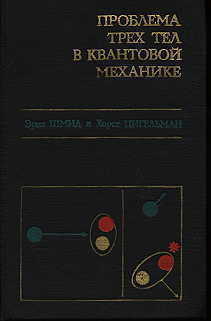
From the back cover:
This volume is intended as an introduction to three body theory. Starting from the time-dependent Schroedinger equation, the formulation of the scattering problem is given, and the specific problems of the three-body theory are discussed in comparison to the two body theory. After a discussion of the inadequacies of the Lippmann-Schwinger equation, the Faddeev theory is developed in detail. A variety of methods for solving the Faddeev equations are given, with special attention to breakup reactions. Two methods that allow us to overcome the common restriction to separable potentials are extensively discussed - the quasi-particle method and the Pade technique. A separate chapter is devoted to variational methods applied to the time-independend Schroedinger equation and to the Faddeev equations. In the case of the Schroedinger equation, special attention is given to the boundary conditions for three-body fragmentation. The methods of hyperspherical harmonics and of sequential decay states, which deal with this additional complication are examined.